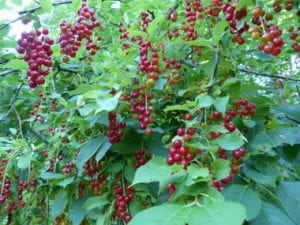Happy Thanksgiving! Everyone has their traditional dishes that must be present at every Thanksgiving meal. Often this is a turkey, green bean casserole, mash potatoes, and stuffing/dressing. Here are some other recipes you might want to consider adding to the table. These are precontact style dishes that can be made using foods that were present in the country before Europeans arrived. More recipes can be found at https://www.firstnations.org/knowledge-center/recipes/. The First Nations Development Institute collected traditional recipes through the Native Agriculture and Food Systems Initiative in partnership with USDA’s Food Distribution Program on Indian Reservations (FDPIR) to not only preserve these traditional foods but also promote healthy eating and sovereignty. Many tribes are beginning to plant traditional foods on their own lands and providing those foods to their families and communities, making them more independent from the highly capitalistic food industry.
Dry Meat Soup
Ingredients:
Potatoes or Hominy
Salt Pork
Water
Directions:
Boil water in a large saucepan, add the dry meat. This process will take a while as you need to get the dry meat soft. It may take three or four hours. Water can be boiled over a stove, fire, or with heated rocks. During this process, you can change the water out. Once the dried meat is soft, add the potatoes or hominy and salt pork. At this point, you do not want to change the water because this is where you capture all of the flavor. Bring the soup to a boil then turn to medium heat until remaining ingredients are cooked through.
Berry Pudding

Ingredients:
Berries
Water
Flour
Sugar
Directions:
Boil berries in a large saucepan, the water should be a couple of inches above the berries. Boil approximately 10 minutes. Strain berry juice and save. Mash the berries to release the juice. Set aside the berries. Mix enough flour and water to make a thick mixture but not a paste. Using the same boiling pan, pour masked berries and less than half of the saved berry juice back in the pan. Heat at medium-high, slowly pouring the flour mixture in the pan. Keep stirring. If liquid gets thick, pour more berry juice, but not too much. Keep stirring the pudding until it comes to a boil; immediately remove from the stove, there should be some juice left. After the pudding cools, add sugar to taste. Do not leave pudding cooking, it needs to be kept stirred.
More recipes from Native American chefs can be found here in the Smithsonian Magazine.
Hope you have a wonderful and safe Thanksgiving. Thank you for your support and reading these posts.
Follow IUP Anthropology on Facebook, Twitter, and Instagram
